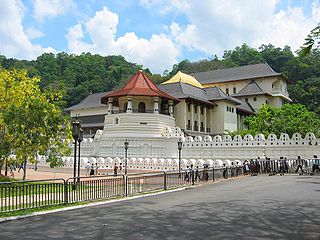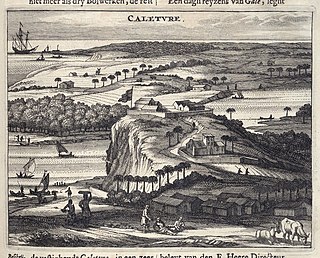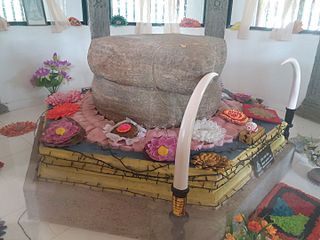| Sitawaka fort | |
|---|---|
| Part of Colombo District | |
| Avissawella, Sri Lanka | |
| Coordinates | 6°57′11″N80°13′28″E / 6.952983°N 80.224367°E Coordinates: 6°57′11″N80°13′28″E / 6.952983°N 80.224367°E |
| Type | Defence fort |
| Site information | |
| Condition | Remnant |
| Site history | |
| Built by | Kingdom of Sitawaka |

Sitawaka fort (Sinhalese : සීතාවක බලකොටුව, translit. Sitawaka Balakotuwa; Tamil : சீதவாக்கைக் கோட்டை, translit. Cītavākkaik Kōṭṭai), was built by the Sitawaka kingdom in Avissawella, Sri Lanka. [1] It was adjoined with the palace of king Rajasinha I. The fort had been mounted with cannon on the river bank. [2]

Sinhalese, known natively as Sinhala, is the native language of the Sinhalese people, who make up the largest ethnic group in Sri Lanka, numbering about 16 million. Sinhalese is also spoken as a second language by other ethnic groups in Sri Lanka, totalling about four million. It belongs to the Indo-Aryan branch of the Indo-European languages. Sinhalese is written using the Sinhalese script, which is one of the Brahmic scripts, a descendant of the ancient Indian Brahmi script closely related to the Kadamba alphabet.

Tamil is a Dravidian language predominantly spoken by the Tamil people of India and Sri Lanka, and by the Tamil diaspora, Sri Lankan Moors, Douglas, and Chindians. Tamil is an official language of two countries: Sri Lanka and Singapore and official language of the Indian state Tamil Nadu. It has official status in the Indian state of Tamil Nadu and the Indian Union Territory of Puducherry. It is used as one of the languages of education in Malaysia, along with English, Malay and Mandarin. Tamil is spoken by significant minorities in the four other South Indian states of Kerala, Karnataka, Andhra Pradesh and Telangana and the Union Territory of the Andaman and Nicobar Islands. It is one of the 22 scheduled languages of India.

The Kingdom of Sitawaka was a kingdom located in south-central Sri Lanka. It emerged from the division of the Kingdom of Kotte following the Spoiling of Vijayabahu in 1521, and over the course of the next seventy years came to dominate much of the island. Sitawaka also offered fierce resistance to the Portuguese, who had arrived on the island in 1505. Despite its military successes, Sitawaka remained unstable, having to contend with repeated uprisings in its restive Kandyan territories, as well as a wide-ranging and often devastating conflict with the Portuguese. Sitawaka disintegrated soon after the death of its last king Rajasimha I in 1593.
Sitawaka fort is destroyed along with palace of king and only the ruins can be seen today by the side of the Avissawella – Panawala road. [3]















